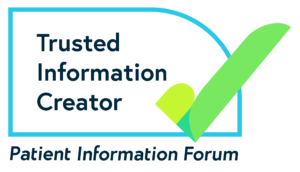Greater Occipital Nerve (GON) block injections
A Greater Occipital Nerve (GON) block is an injection into the back of your head. It can help to prevent migraine attacks.
About Greater Occipital Nerve (GON) block injections
GON block injections contain small doses of local anaesthetic with or without a steroid. You have the injections in the back of your head, where the greater occipital nerves are located. The greater occipital nerves travel up each side of the back of your head. They are thought to play a role in transmission of pain signals in migraine. GON block injections aim to reduce pain by targeting this nerve. You may have the injection on one side of your head or both.
Who can have a GON block injection for migraine
GON block injections can provide a short-term (usually a few weeks) benefit for some people to help prevent migraine attacks. Your doctor may offer you a GON block if other preventive treatments haven’t helped, or you are waiting for new medicines to work. They can also be an option if you can’t have other treatments because of your age, or because you are pregnant. Your doctor may also offer you a GON block to treat a prolonged migraine attack (status migrainosus).
GON block injections can only given by an experienced headache or pain specialist. Your GP can arrange a referral to a specialist if necessary to discuss your treatment options.
What GON block injections involve
You will have an appointment for your GON block injection at a clinic in hospital. You’ll be asked to sit on a chair. Your doctor will usually feel around the back of your head to locate the best place for the injection. They will use a fine needle for the injection. Some people find the injection stings a little bit, but any pain is generally mild and only lasts a few minutes.
Most people feel fine after the injection. Occasionally people can feel a little dizzy for a few minutes. You should be able to go home within 15 minutes after the injection.
The area around the injection may feel numb and tender for a few hours after the injection. Some people find the numbness spreads across the side of the head that has been injected.
How well GON block injections work for migraine
A GON block can be an effective treatment for people with migraine. It can help to stop a migraine attack. It can also help to reduce how often you have migraine attacks, and how severe they are. But the response varies from person to person. It can take a day or two until you notice a difference. Usually the benefits only last for a few weeks at the most, but it can be several months for some people.
If the GON block improves your pain, you may be able to have a repeat injection. How frequently you can have a repeat injection will depend on resources in your area.
If GON block injections don’t work for you, talk to your doctor about other treatment options. These may include other types of preventive treatment. Your doctor may also suggest a combination of treatments.
Side effects of GON block injections
Generally, GON blocks are well tolerated. Any side effects are usually mild and temporary. There is a small chance of bleeding, pain or swelling at the injection site. Some people also feel a bit dizzy afterwards. This is why you’re asked to wait for a little while after the injection.
It’s common to experience numbness or tingling on the side of your head where you’ve had the injection. This can last for a few hours after your procedure. This isn’t something to be concerned about. It shows that the anaesthetic is having the intended effect on the nerve.
Some people find their migraine feels worse for a few days after the injection. This should settle down. If it continues or you are concerned by any side effects, contact your doctor.
About our information
 This information has been written by The Migraine Trust Information and Support Services team. It has been reviewed by our panel of expert health professionals and people affected by migraine.
This information has been written by The Migraine Trust Information and Support Services team. It has been reviewed by our panel of expert health professionals and people affected by migraine.
Our information has been awarded the PIF TICK quality mark for trustworthy health information.
If you have feedback on our information, please get in touch at: feedback@migrainetrust.org
References for our information are available on request.
Last reviewed: January 2025 | Next review due: January 2028


